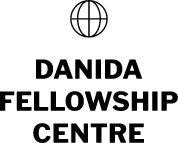Climate Change and Global Value Chains in the Garment and Textile Industries of Europe and Bangladesh: A Personal Perspective
22-02-23
By Martin Saad Abdullah
As a Computer Science and Engineering Professor at BRAC University in Bangladesh, I am privileged to be a part of a dynamic research project supported by Danida that aims to explore the reconfiguration of the global value chain between Bangladesh and Europe in light of the pressing issue of climate change. The project, which I am involved in, provides an in-depth examination of how actors in the global value chain of the garments and textile industries are adapting to this complex and multi-faceted challenge.
More about the research project Climate Change and Global Value Chains in Bangladesh
Through Danida Fellowship Centre, fellow researchers and I have participated in a number of seminars and workshop preparing us for cross sector collaboration to solve these exact complex challenges of the garment and textile industry.
For example, I recently participated in the “Engagement, Influencing and Impact Training for Danida Supported Researchers”. This seminar provided me with a valuable insight into the importance of engaging stakeholders from the beginning of a research project. The training emphasized that such engagement can significantly improve the impact of a project and facilitate co-creation through three key pathways; understanding the needs of stakeholders, increasing ownership, and fostering collaboration.
Furthermore, I also had the opportunity to attend a workshop organized by the Danida Fellowship Centre on “Solving Bangladesh’s Future Challenges in the Context of Global Supply Chains – A Triple Helix Approach to Collaboration between Industry, Government, and Universities.” This provided a compelling framework for how innovation can be fostered through close collaboration between government, industry, and academia.
However, implementing the Triple Helix model in the context of Bangladesh presents a number of challenges, including limited capacity within government and academia to engage effectively in innovation, limited collaboration between universities and industry, and limited involvement of the private sector in innovation and research. Despite these challenges, there are many examples of successful Triple Helix initiatives in Bangladesh, such as the Digital Bangladesh vision that has been implemented by the Bangladesh Association of Software and Information Services (BASIS) in collaboration with government and universities to promote the growth of the country’s IT industry.
As a researcher, the Triple Helix task force that was formed after the workshop provides me with the opportunity to understand the research problem from the perspectives of different stakeholders, leading to practical solutions with a more significant impact. The task force will also generate ideas that can be translated into research proposals that explore effective ways to address specific challenges and opportunities related to innovation and economic development.
In conclusion, I am confident that the research project I am involved in and the Triple Helix model that we are exploring will lead to meaningful insights into how the global value chain of the garments and textile industries in Bangladesh and Europe can be adapted to the realities of a changing climate. Engagement, collaboration and cross disciplinary innovation between different sectors of society is the way forward.
Go back to our stories